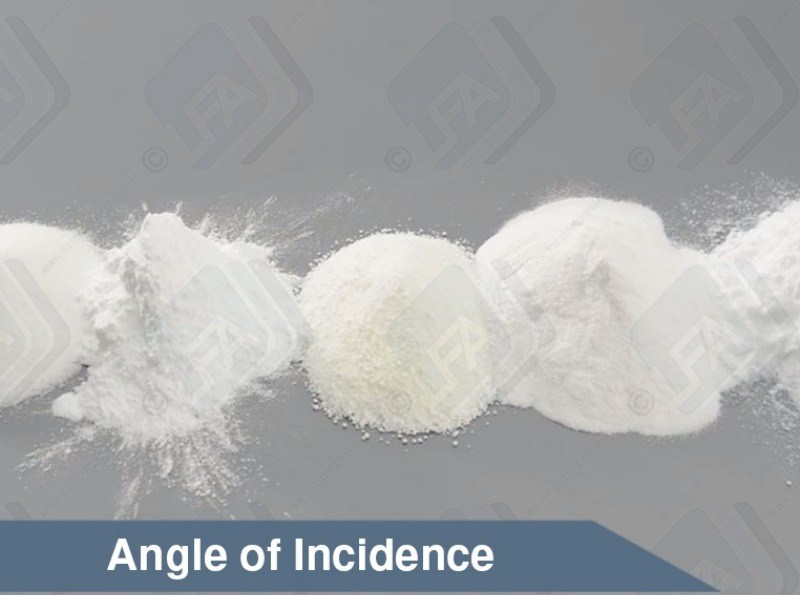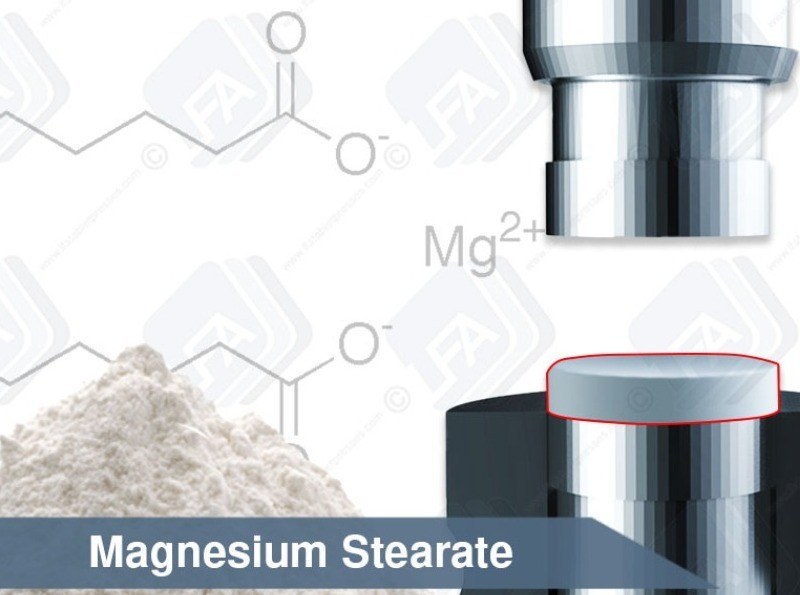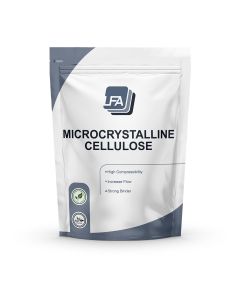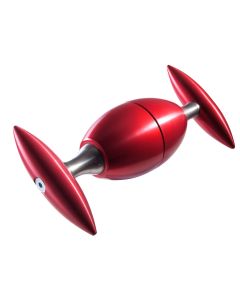Stearynian magnezu
Stearynian magnezu to drobny, biały proszek. Jego głównym celem jest zapewnienie odpowiedniego poślizgu w kapsułkach i tabletkach. Zwiększa płynność, co zapewnia wydajność całego procesu produkcyjnego.
Stearynian magnezu to jeden z najpopularniejszych lubrykantów dostępnych na rynku. Jest popularny ze względu na jego efektywność jako suchy lubrykant. Jest chemicznie niereaktywny i może znacznie ułatwić proces formulacji.
Stearynian magnezu to sól magnezowa z dodatkiem kwasu stearynowego. Kwas stearynowy to nasycony tłuszcz z łańcuchem z 18 atomów węgla, często spotykany w jedzeniu. Stearyny reprezentują naturalną część każdego rodzaju tłuszczu, zarówno zwierzęcego, jak i roślinnego. To powszechny kwas tłuszczowy, obecny w rybach, zbożach, jajkach, maśle, drobiu, mięsie i produktach mlecznych. W mięsie stanowi jedną trzecią kwasów nasyconych. Dzięki temu konsument jest z nim zaznajomiony. To świadczy również o bezpieczeństwie tego składnika. To nie jest nic nowego dla ludzkiego ciała. Dodaje to so produktu element bezpieczeństwa.
Po co używać lubrykantów?
Lubrykanty są bardzo istotne w produkcji tabletek. Dlatego też stearynian magnezu jest tak powszechnie używany. Celem lubrykantu jest poprawienie procesu produkcji. Można wyróżnić jego trzy funkcje.
- Zmniejszenie tarcia w punkcie styczności powierzchni tabletek i ścianą głowicy podczas wyrzutu. To zmniejszy zużycie tabletek.
- Zapobieganie przywierania roztworu do części urządzenia, przez które przebiega.
- Zwiększenie przepływu dzięki zmniejszeniu tarcia pomiędzy cząsteczkami.
Doskonały lubrykant utworzy mocną warstwę na powierzchni. Kolejnym pozytywnym faktorem jest to, że nie wpływa na zmienne procesowe. Zmienne procesowe to dynamiczna część procesu, który może się zmienić w określony sposób. Zazwyczaj będą to: przepływ, ciśnienie i temperatura. Jeśli jakakolwiek z tych zmian dojdzie do skutku, nie powinna wpłynąć na proces produkcyjny.
Magnez wywiera duży wpływ na zdrowie. Jest jednym z kluczowych minerałów i często brakuje go w diecie przeciętnego człowieka, mimo tego, że znajduje się w wielu produktach. Pomaga utrzymać poziom cukru we krwi i ciśnienie krwi na odpowiednim poziomie. Uczestniczy w tworzeniu DNA i protein oraz sprawia, że mięśnie i nerwy poprawnie funkcjonują. Kobiety, aby utrzymać doskonałe zdrowie, potrzebują 320 miligramów dziennie, zaś mężczyźni - 420.
Stearynian magnezu jest:
- Na liście "GRAS" (Generally Recognized As Safe - środków ogólnie uznawanych za bezpieczne)
- Stworzony jako dodatek do żywności w Europie
- Wytwarzany z olejów roślinnych, najczęściej z oleju palmowego i bawełnianego
Obchodzenia się z stearynianem magnezu
Stearyny można wytwarzać w procesie hydrogenizacji (poddawania działaniu wodoru). Rezultatem tego procesu jest produkt, z którym powinno się ostrożnie obchodzić.
Stearynianu magnezu nie można łączyć z powietrzem, ponieważ może dojść do eksplozji pyłu. Za wszelką cenę trzeba trzymać go z dala od ognia. Jeśli jest suchy, można go naładować elektrostatycznie m.in. poprzez mieszanie i przelewanie. Wdychany może wywoływać kaszel, a zjedzony - wymioty. Należy używać ochronnych rękawiczek, okularów ochronnych i maski.
Formuła chemiczna stearynianu magnezu to Mg(C18H35O2). Inne nazwy to kwas oktadekanowy i sól magnezowa.
Ten produkt jest najczęściej wybieranym suchym lubrykantem. Co więcej, jako minerał, który jest obecny w ludzkim ciele, może być bezpiecznie spożywany nawet w dużych ilościach. Może stanowić idealną substancję pomocniczą w Twoich produktach.
| Nazwa | Wartość |
|---|---|
| Numer CAS | 557-04-0 |
| Formuła molekularna | Mg(C18H35O2)2 |
| Forma | Lekki, biały proszek |
| Stan fizyczny | Stały |
| Przechowywanie | Przechowywać w temperaturze pokojowej |
| Temperatura topnienia | 200Â °C |
| Gęstość | 1.026 g/c |
| Waga molekularna | 591,27 g/mol |
| Net Weight (kg) | 1.1 |
Yes, it does not matter what age, size or sex the person consuming the products is. It is, however, important to check the intolerance data.
Yes, all of the excipients are safe for human or animal consumption. There are some precautions that should be taken when handling them and there are some people that might have intolerances to some of them. Information on this can be found in the products MSDS and Intolerance Data Sheet. This can be found in this section for every excipient.
Tak, wszystkie nasze substancje pomocnicze pochodzą z naturalnych źródeł. Więcej informacji można znaleźć na poszczególnych stronach produktów.
Yes, we have bulk pricing for all of our excipients, and these can be found in this section. We offer bulk in 500 kg, 1 ton, 2 ton and 5 ton lots. The prices are set on these quantities as these are the amounts that will fit on pallets.
Yes. CoA stands for Certificate of Analysis this is also known some times as an MSDS (Material Safety Data Sheet) all of the information contained in a CoA is inside the MSDS for every LFA product which is emailed to you after purchase.
To mało prawdopodobne, aby produkcja tabletek bez dodatku substancji pomocniczych była możliwa. Niektóre substancje mogą wiązać się bez dodatku substancji pomocniczych, jednak nie będą w stanie przejść przez tabletkarkę. Zalecamy stosowanie gotowej mieszanki Firmapress Pigułka Mix, która łączy się z 99% substancji.
Yes. There are two things at play here. You can get hygroscopic and hydrophobic excipients. Hygroscopic means that they take on water quickly, while hydrophobic means that they repel water.
There are products know as supper disintegrants. These products help the breakdown of tablets. At the moment LFA does not sell any supper disintegrants.
Magnesium stearate is hydrophobic this means that it will slow the breakdown of a tablet.
However, it is used in such small amounts that most of the time it will not make a difference to our customer's products. If they would like to be sure then they should conduct what is known as a disintegration test.
Firmapress - 2 years form batch date.
Dextrose - 3 years from batch date.
Dicalcium Phosphate - 3 years from batch date.
Microcrystalline Cellulose -
Magnesium stearate -
Lactose - 2 years from batch date.
Silica Dioxide - 2 years from batch date.
here are 6 steps that should be followed as a general rule of thumb when cleaning contact surfaces that have come into contact with powders:
Dry Clean - First you need to remove as much of the dry powder as possible. You can do this using a hover/vacuum. Make sure that the vacuum you are using has a filter good enough to handle fine dust.
Wet Clean - Next you need to perform a wet clean. This can be done with warm water and soap or if available an ultrasonic cleaner.
Rinse - Next you need to rinse off any soap with potable water (drinking water). You do not have to do this if you used an ultrasonic cleaner in the last step. It is important to ensure that all parts are thoroughly dried immediately after washing to avoid any rusting.
Sanitise - Next you need to sanitise the surface. This step is recommended by the FDA. There are a number of sanitising solutions available designed to be applied and left on.
Lubricate - You now need to lubricate any parts that require it. This should be with the appropriate grade oil or grease considering your use and greasing chart. Store - Finally store any of the parts in a cool dry place. If you are storing them on the machine then make sure the machine is in a temperature controlled environment with low humidity.
Oferujemy substancje pomocnicze w postaci celulozy mikrokrystalicznej, staerynianu magnezu, wodorofosforanu wapnia oraz Firmapress Pigułka Mix.
Celuloza mikrokrystaliczna to środek wiążący, który utrzymuje zawartość tabletki.
Wodorofosforan wapnia to środek rozprowadzający, który pomaga składnikom przechodzić przez urządzenia zanim zostaną skompresowane.
Staerynian magnezu jest suchym smarem, który również pomaga składnikom przejść przez maszynę, jednak ponadto pomaga podczas wyrzutu tabletek z urządzenia. Należy pamiętać, że sam w sobie nie wiąże się.
Firmapress Pigułka Mix jest mieszanką celulozy mikrokrystalicznej, stearynianu magnezu oraz wodorofosforanu wapnia.
Dextrose - approx 100 mesh
Dicalcium Phosphate - approx 100 mesh
Microcrystoline Cellulose - approx 120-200
Magnesium sterate -
Lactose - 80 mesh
Silica Dioxide -
Firmapress - 100-200 mesh
Dextrose - Sweetener, binding agent, good for chewable tablets or candy.
Microcrystalline Cellulose - Binder, filling agent. Good at binding tablets and making them bigger. It can also be used as a filler for capsules.
Magnesium stearate - Dry Lubricant. This stops products from getting stuck to the tooling. It can also help with powder flow issues and caking issues.
Lactose - Binder, sweetener and bulking agent. It has a large mesh so it flows well but most people do not like it because of the intolerance issues.
Silica Dioxide - Flowing agent. This assist powders in flowing smoothly through the machines. It also helps with cacking issues where powders get stuck to the machine.
Firmapress - 2 years form batch date.
Dextrose - 3 years from batch date.
Dicalcium Phosphate - 3 years from batch date.
Microcrystalline Cellulose -
Magnesium stearate -
Lactose - 2 years from batch date.
Silica Dioxide - 2 years from batch date.
If your product does not bind well then we would recommend using MCC. This can be used in any % the limiting factor is the size of the tablet.
If the amount of MCC you would have to use would be too much or if you do not want to use MCC then you have 3 other options: Ask your supplier for a directly compressible or tabletable grade of your product. Spray dry your product. Wet granulate your product.
If your product is sticky then you will need to add a dry lubricant to your mix. For this, we recommend magnesium stearate.
We do not recommend that you add more than 1% to the mix as more than this can cause capping. If your product is still sticky at this point then we would recommend looking into granulation.
If your product or API is clumpy then you will need to add an anticaking agent. For this, we recommend silicon dioxide. We only recommend adding a maximum of 2% of this to the mix









